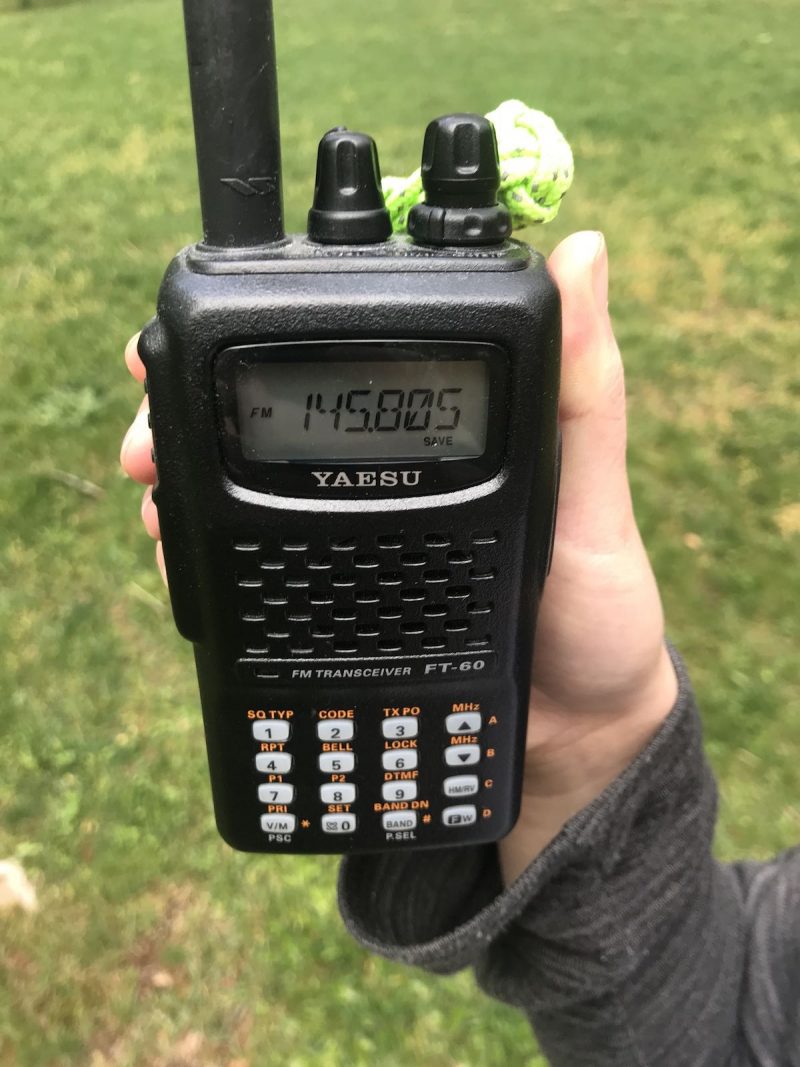This morning, my daughter Geneva and I stepped outside with her Yaesu FT-60 around 8:35 EDT, tuned to 145.80 and listened to Astronaut Mark Vande Hei aboard the ISS speak to a group of students in Green Bank, West Virginia via the ARISS program.
This stuff never gets old.
Here we are standing in the front yard with a handheld radio listening live to an astronaut passing overhead in a football field-sized space station travelling at five miles per second.
This was just one exchange I recorded. At one point, the audio was so good we could actually hear the hum of equipment, and other astronauts speaking and working in the background.
Geneva has a laser focus on making a career in spaceflight, so she absolutely loves this sort of thing.
How to listen to the ISS
Listening to the ISS is very easy: The frequency of the downlink is 145.80 MHz FM. Any scanner or handheld radio that can receive this frequency will work. As the ISS climbs above the horizon, because of doppler-shift, start listening on 145.805, then slowly move to 145.80 as the ISS approaches zenith and finally move to 145.795 MHz as the ISS drops toward the other horizon.
Of course, you need to check the pass first to make sure you’re within the footprint of the station’s signal.
ARISS contacts happen several times a year. Check out the ARISS “Upcoming Contacts” page where future ARISS QSOs are listed. This is a great opportunity to show kids of all ages what can be heard with a modest radio!


Naive question here, but is that 145.8 MHz downlink always “active” in the sense that there is near-continual chatter from the ISS on that frequency? Or does one have to wait for special events (like astronaut conversations with schools) to hear anything?
It’s more of a special event thing: ARISS for example.
Astronauts do make direct simplex contacts from time-to-time, but it’s a matter of a window fitting in their busy schedule and the pass coinciding with where you live.
There is a repeater on the ISS and they occasionally do SSTV specials.
Thanks Thomas. I may try tuning into the repeater downlink with my HT next time there is a high-elevation pass over my area.
Another way to spot the ISS is going to
https://www.n2yo.com/
at the top of page you’ll see a note saying “ISS will cross your sky…” click it (it’s a link) and you’ll be presented with a table showing dates and times of the passages, with colors indicating the best ones
The thrill is real. I remember attending one with the Canadian Space Agency astronaut aboard, in a gymnasium full of kids, and me with my Yupiteru scanner tuned to the same frequency. Thrilling then, and thrilling now!
More good news. The ISS FM crossband repeater is back on the air! Uplink, 145.990 MHz (67 Hz PL) and downlink, 437.800 MHz. Bob, I suggest you download the HEAVENS-ABOVE app to track the ISS, other satellites, planets and stars. You can set up this app to only show you the active satellites or whichever ones you are interested in. It also has a special section just for the ISS. One fun thing to do is catch a visible ISS pass and listen to/work the ISS while you watch it “fly” by! More details here:
https://www.ariss.org/current-status-of-iss-stations.html
and
https://www.amsat.org/status/index.php
That’s awesome! Prompted me to go to NASA and print out fly-over opportunities for Greensboro for the rest of May. There are 21 opps. 🙂
Regards,
Bob
W4EGJ